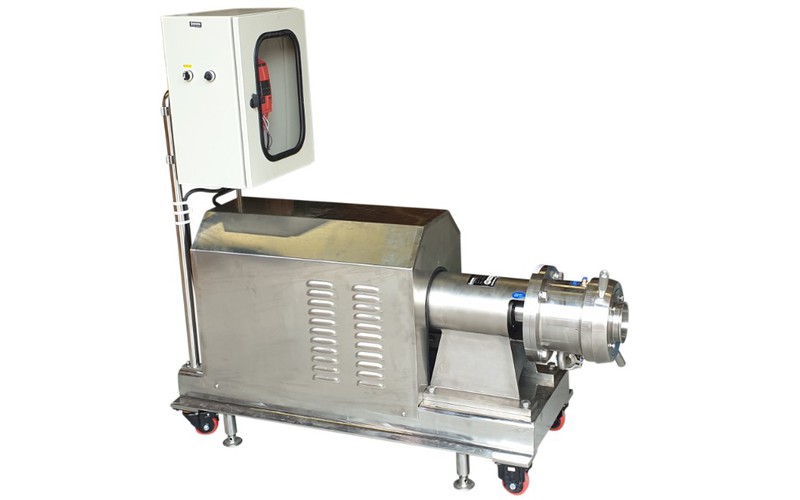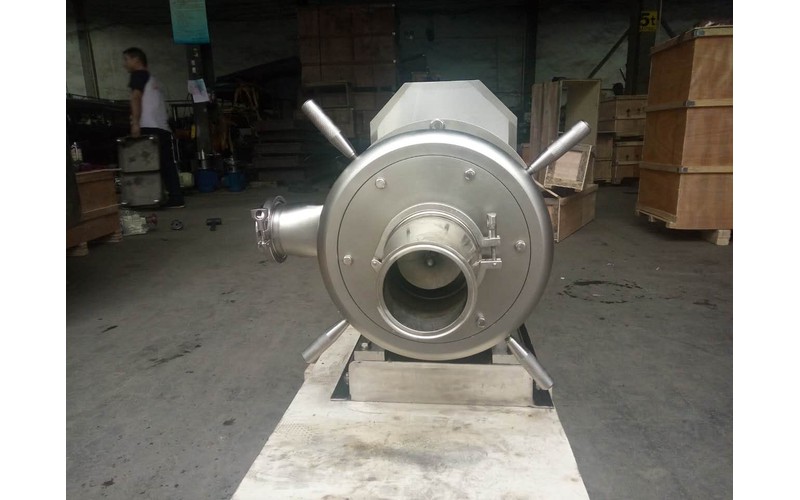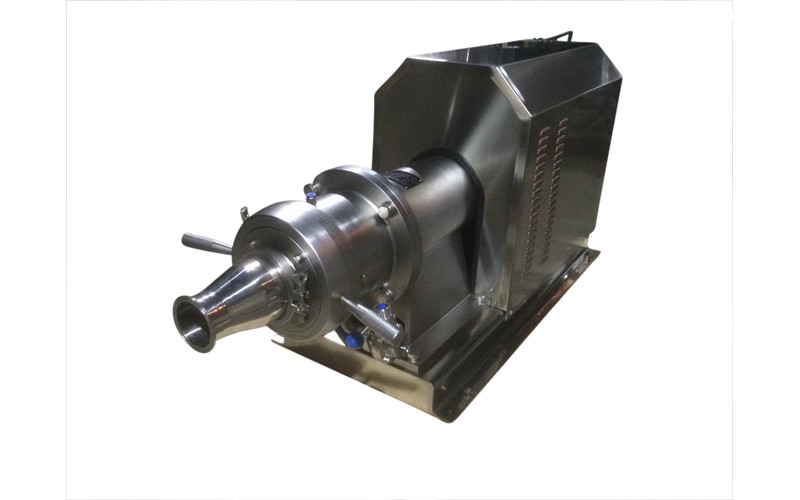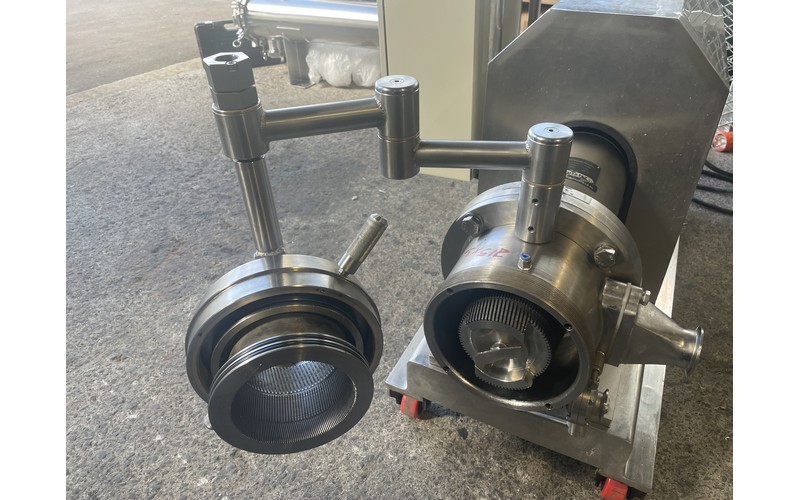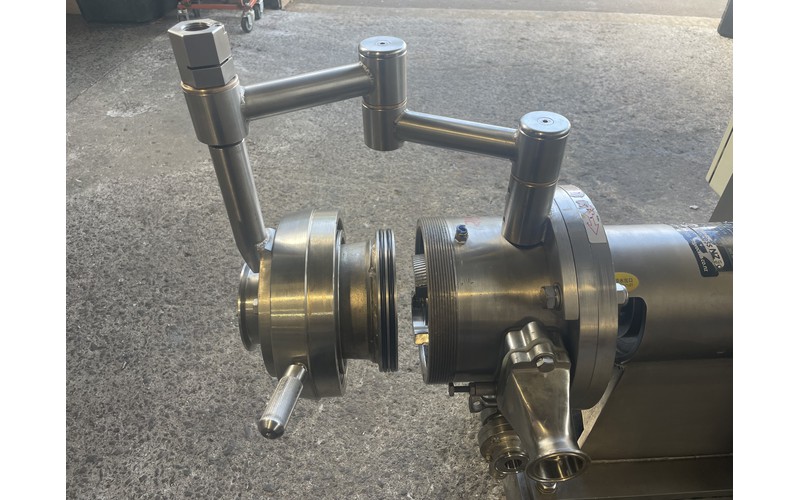Colloid Mill - In Line version
HD Process Supply vertical and in-line colloid Mills. The inline colloid mill in the photo Allows for adjustment of the gap between the rotor and stator in order to vary the texture of the outgoing product. For most applications this unit will be used with a pusher pump in order to maintain flowrate and control production.
A colloid mill is a machine that is used to reduce the particle size of a solid in suspension in a liquid, or to reduce the droplet size of a liquid suspended in another liquid. Colloid mills work on the rotor-stator principle: a rotor turns at high speeds (2000 - 18000 RPM[1]). The resulting high levels of hydraulic shear applied to the process liquid disrupt structures in the fluid. Colloid mills are frequently used to increase the stability of suspensions and emulsions., but can also be used to reduce the particle size of solids in suspensions.]
Higher shear rates lead to smaller droplets, down to approximately 1 µm[2] which are more resistant to emulsion separation.
A colloid mill is a machine that is used to reduce the particle size of a solid in suspension in a liquid, or to reduce the droplet size of a liquid suspended in another liquid. Colloid mills work on the rotor-stator principle: a rotor turns at high speeds (2000 - 18000 RPM[1]). The resulting high levels of hydraulic shear applied to the process liquid disrupt structures in the fluid. Colloid mills are frequently used to increase the stability of suspensions and emulsions., but can also be used to reduce the particle size of solids in suspensions.]
Higher shear rates lead to smaller droplets, down to approximately 1 µm[2] which are more resistant to emulsion separation.

